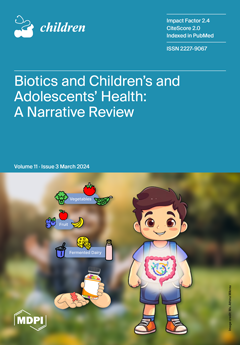Background: We aimed to compare among patients with high-type anorectal malformations (ARM): (i) short- and long-term outcomes of laparoscopic-assisted anorectoplasty (LAARP) compared to classic posterior sagittal anorectoplasty (PSARP) and (ii) the results of single-stage versus staged PSARP. Methods: Using a defined search strategy,
[...] Read more.
Background: We aimed to compare among patients with high-type anorectal malformations (ARM): (i) short- and long-term outcomes of laparoscopic-assisted anorectoplasty (LAARP) compared to classic posterior sagittal anorectoplasty (PSARP) and (ii) the results of single-stage versus staged PSARP. Methods: Using a defined search strategy, two independent investigators systematically reviewed the English literature. PRISMA guidelines were followed, and meta-analysis was performed using RevMan5.3. Results: Of 567 abstracts screened, 7 papers have been included (254 pts; 121 PSARP, 133 LAARP) in the first systematic review and meta-analysis. The length of hospitalization was shortened in LAARP versus PSARP (10.9 versus 14.4 days;
p < 0.0001). PSARP and LAARP were comparable in terms of early postoperative complications (28.9% versus 24.7%;
p = ns) and rectal prolapse (21.6% versus 17.5%;
p = ns). At long-term follow-up, the presence of voluntary bowel movements (74.0% versus 83.5%;
p = ns) and the incidence of soiling (45.5% versus 47.6%;
p = ns) were similar in both PSARP and LAARP. Six papers (297 pts) were included in the second systematic review, with three comparative studies included in the meta-analysis (247 pts; 117 one-stage, 130 staged procedures). No significant difference in terms of presence of voluntary bowel movements after single-stage versus staged procedures (72.6% versus 67.3%;
p = ns) has been detected. Conclusions: LAARP seems to be a safe and effective procedure, showing short- and long-term outcomes similar to PSARP. One-stage PSARP could be a safe alternative to the classic three-stage procedure, even for those infants with high-type ARM. Further and larger comparative studies would be needed to corroborate these partial existing data.
Full article






